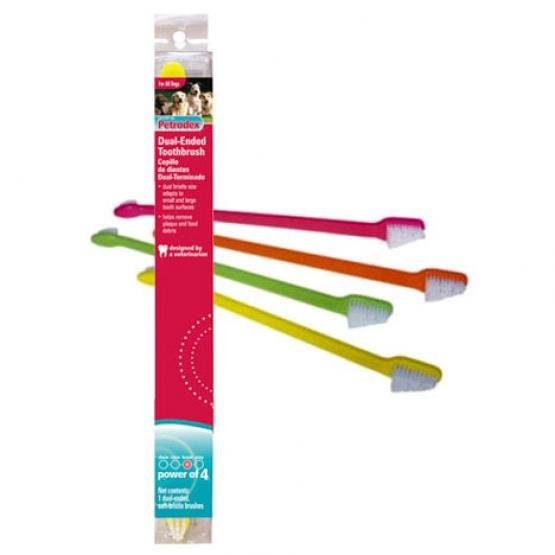 February is National Pet Dental Health Month. It is a great time to start regularly brushing your pet’s teeth if you are not doing so already!
February is National Pet Dental Health Month. It is a great time to start regularly brushing your pet’s teeth if you are not doing so already!
Did you know that 80 percent of dogs show signs of oral disease by the time they’re three years old? Those signs include inflamed gums, bad breath and tartar buildup. Poor oral hygiene can lead to other health concerns for your pet, from gum disease to liver and heart problems. In severe cases, the plaque that builds up can even cause life-threatening conditions. With regular teeth cleanings, you can help keep your pet healthy and keep his breath fresh.
Here are some tips to keep in mind when you start to brush your dog’s teeth:
1) Buy a good toothbrush. You will need a larger toothbrush for larger breeds. I would suggest the Dual End Petrodex Pet Toothbrush, which has a long handle perfect for reaching the teeth at the back of the mouth. A finger brush like the Pet Dental Finger Toothbrush is all you will need for smaller dogs. You can use finger brushes on smaller dog breeds and cats.
2) Buy toothpaste specifically for dogs. Human toothpaste can be very harmful on your pet’s stomach. Petrodex Peanut Flavored Toothpaste is a popular brand because the peanut taste makes your pet think he is getting a treat! Let your dog get used to the taste of the toothpaste flavor before you start brushing. For example, you can let him lick the toothpaste off of your finger. If your pet does not like the flavor of the toothpaste, it will make brushing their teeth very difficult.
3) Make sure your dog is comfortable before you begin. Do not approach your dog when he is hyper or in a bad mood. You should also remain calm, as dogs are very sensitive to their owner’s anxiety level.
4) Have a plan before you start. A good plan of action when brushing your dog’s teeth is to start with the upper teeth and then move onto the lower teeth. To begin, lift the upper lip with one hand and brush the gum line at a 45 degree angle in a circular motion. Pay special attention to removing the plaque on the gums.
5) Reward your pup! Whether you give your pet a treat or take him for a walk, make sure you let your dog know he did a good job!
Regular preventative care can improve the health, quality of life and longevity of your pet. It’s never to late to start practicing good pet health habits, so start brushing your dog’s teeth today!
